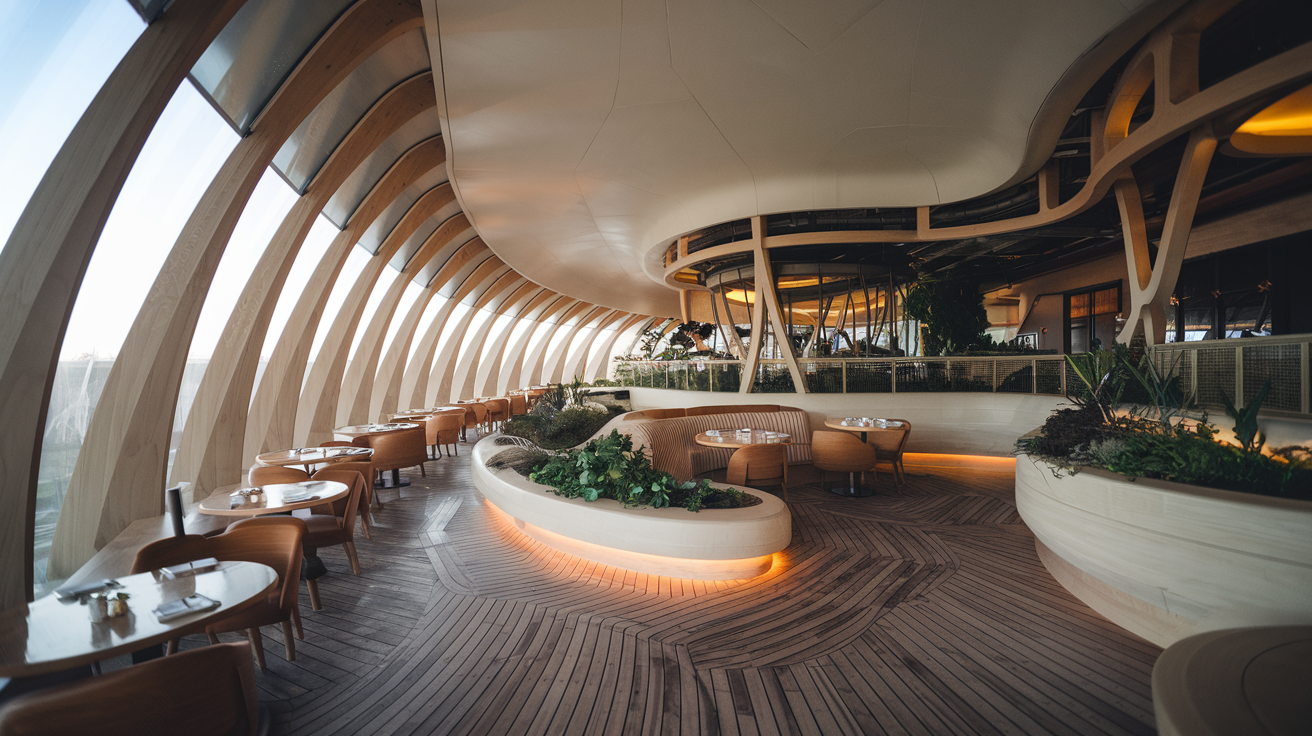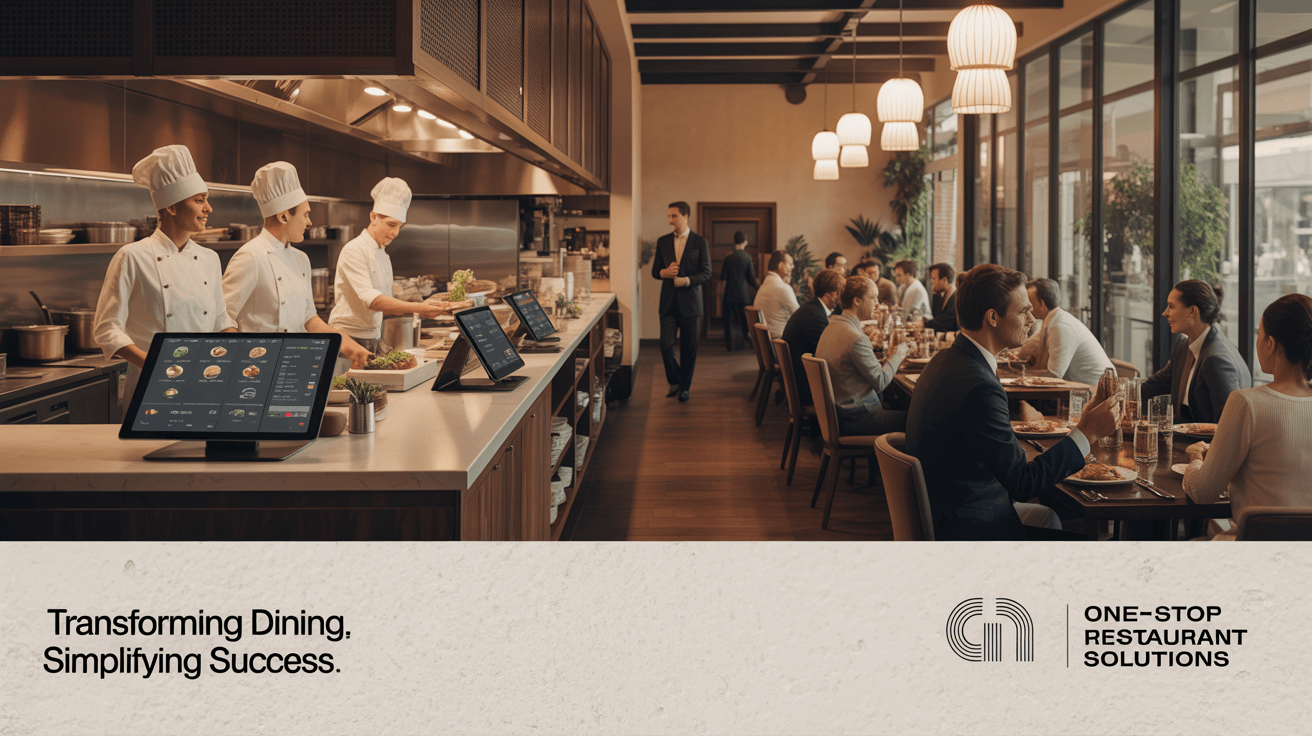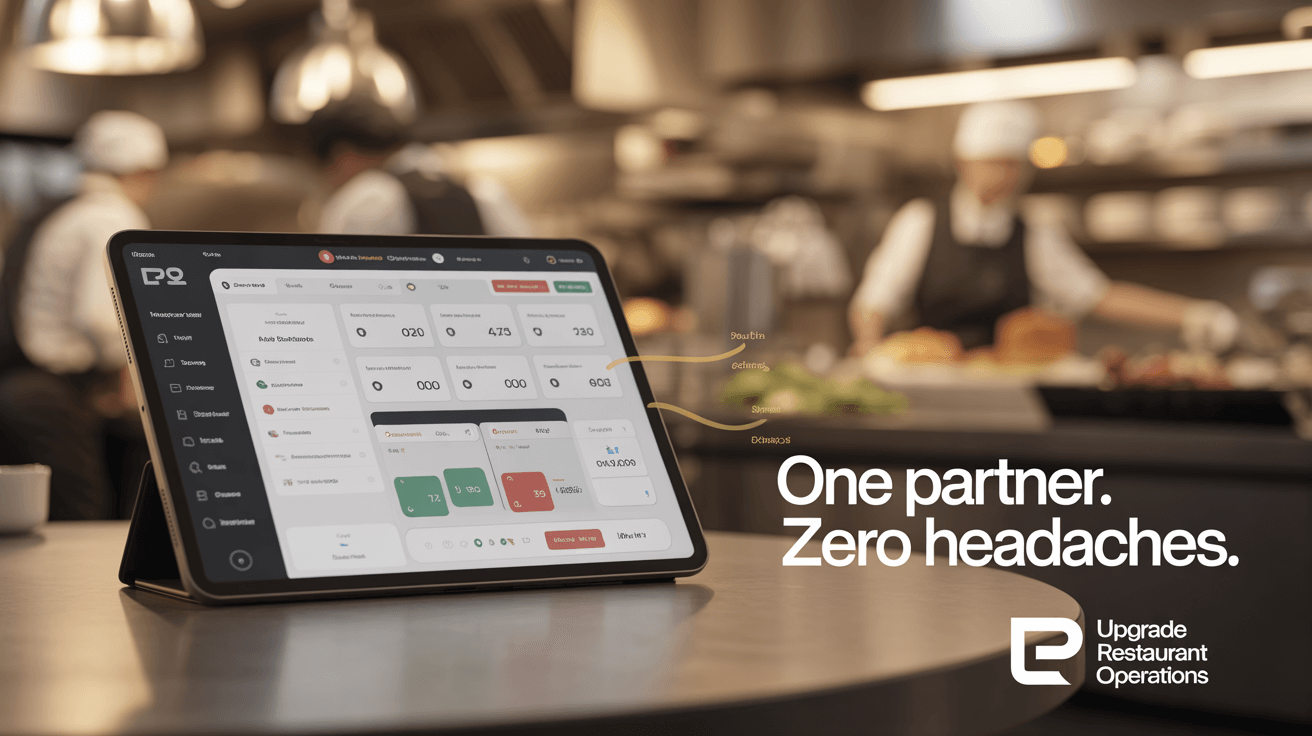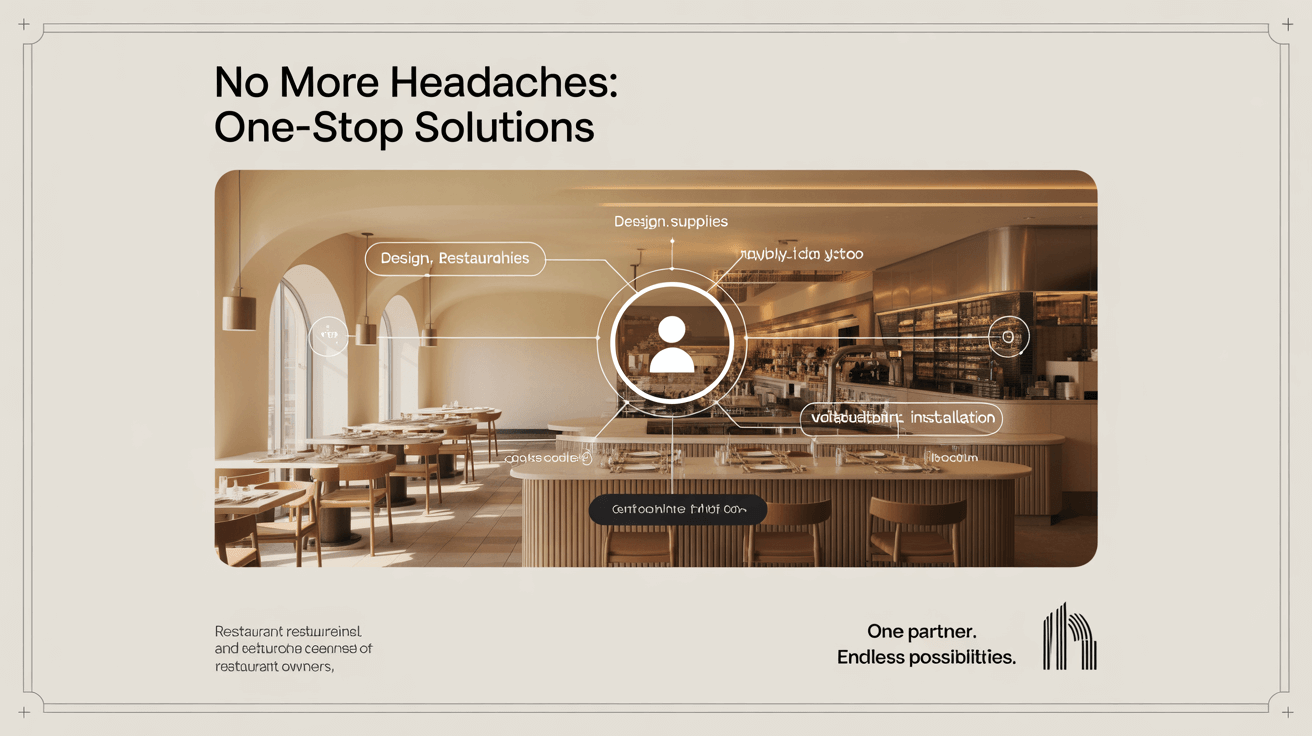Introduction: Why Restaurant Design Matters in 2025
In the ever-evolving world of dining, a venue’s layout and decor are no longer just about aesthetics—they’re a powerful tool that shapes experiences, evokes emotions, and keeps patrons coming back for more. As we step into 2025, the boundaries of creating captivating spaces are being redefined, blending artistry, functionality, and innovation to craft environments as unforgettable as the cuisine they serve. Picture walking into an eatery where every corner tells a story, where the ambiance feels like an extension of the menu, and where every detail is meticulously crafted to delight your senses. This is the future of hospitality.
Emerging trends in 2025 are not just about visual appeal; they’re about curating immersive settings that influence how guests feel, behave, and connect with your brand. From nature-inspired interiors that bring the outdoors in to tech-enhanced dining experiences that blur the lines between physical and digital, the establishments of tomorrow are set to revolutionize the way we eat, socialize, and unwind. Whether you’re a business owner looking to stay ahead of the curve or a design enthusiast curious about what’s next, this guide will unveil the top 10 trends that will captivate your audience and set your space apart. Get ready to reimagine the dining experience—because in 2025, thoughtful design isn’t just a detail; it’s the main course.
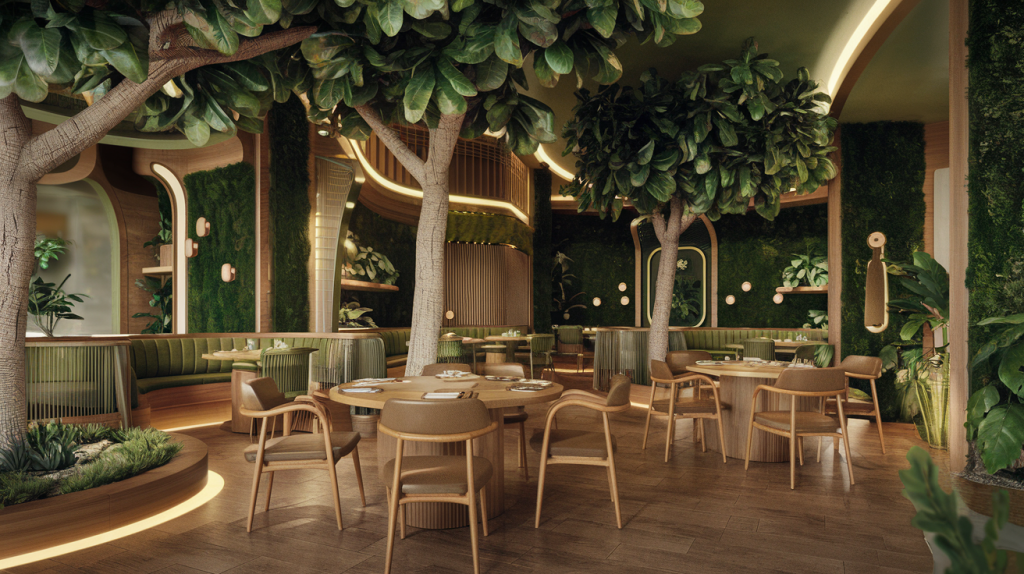
Biophilic Design: Bringing Nature Indoors
In a world where urban living often disconnects us from the natural environment, biophilic design emerges as a breath of fresh air—literally. This innovative approach integrates elements of nature into built spaces, creating environments that soothe the soul and invigorate the senses. But what exactly is this concept, and why is it becoming a must-have for forward-thinking venues?
At its core, biophilic design is about fostering a deep connection between people and the natural world. It’s not just about adding a few potted plants here and there; it’s a thoughtful curation of organic materials, textures, and patterns that mimic the outdoors. Think reclaimed wood tables, stone accent walls, and cascading greenery that transforms a space into a living, breathing oasis.
The appeal lies in its ability to evoke a sense of calm and well-being. Studies show that incorporating natural elements like foliage, water features, and sunlight can reduce stress, boost mood, and even enhance creativity. For diners, this means a more relaxing and enjoyable experience, encouraging them to linger longer and return often.
But it’s not just about aesthetics—biophilic design also drives engagement. Imagine a dining area bathed in natural light, with vertical gardens serving as a backdrop for Instagram-worthy moments. These touches not only elevate the ambiance but also create a unique identity that sets your space apart.
As we move into 2025, embracing this trend isn’t just a design choice; it’s a strategic move to create environments that resonate deeply with your audience. By bringing the outdoors in, you’re not just designing a space—you’re crafting an experience that feels alive, inviting, and unforgettable.
Sustainable and Eco-Friendly Materials
As the world becomes increasingly aware of environmental challenges, the hospitality industry is stepping up to the plate with eco-conscious solutions. The rise of green dining spaces isn’t just a trend—it’s a movement toward responsible design that respects the planet while captivating guests. In 2025, sustainability isn’t an afterthought; it’s a cornerstone of creating spaces that align with modern values.
One of the most impactful ways to embrace this shift is through the use of recycled, upcycled, and locally sourced materials. Imagine tables crafted from reclaimed barn wood, chairs made from repurposed industrial materials, or countertops fashioned from recycled glass. These choices not only reduce waste but also infuse your venue with a unique, story-driven character that resonates with eco-aware patrons.
Locally sourced elements further enhance this approach, minimizing carbon footprints while supporting regional artisans and industries. From handwoven textiles to locally quarried stone, these touches add authenticity and a sense of place to your design.
Examples of sustainable decor are as varied as they are inspiring. Think bamboo light fixtures, cork wall panels, or even plant-based fabrics for upholstery. These materials aren’t just environmentally friendly—they’re also durable, stylish, and versatile, proving that sustainability and sophistication can go hand in hand.
By integrating eco-friendly materials into your space, you’re not just making a design statement; you’re making a commitment to the future. It’s a powerful way to connect with guests who prioritize sustainability, ensuring your venue stands out as a leader in the green revolution.
Multi-Functional Spaces for Flexibility
The secret lies in designing areas that can effortlessly transform to meet diverse needs. Picture a chic café by day that morphs into an intimate event space by night, or a restaurant that doubles as a collaborative workspace during off-peak hours. This adaptability not only boosts operational efficiency but also opens up new revenue streams.
In a fast-paced world where versatility is key, the demand for adaptable environments is reshaping how we think about hospitality design. Multi-functional spaces are no longer a luxury—they’re a necessity, offering venues the ability to seamlessly transition between dining, events, and even coworking setups. This trend is all about maximizing utility without compromising on style or comfort.
Movable furniture and modular layouts are at the heart of this approach. Think lightweight tables on casters, stackable chairs, and partition walls that can be rearranged to create private nooks or open areas. These elements allow you to reconfigure your space on the fly, catering to everything from large gatherings to intimate dinners.
But the benefits go beyond practicality. Flexibility enhances the guest experience by offering variety and novelty. Diners appreciate the dynamic energy of a space that feels fresh and versatile, while event attendees enjoy the tailored ambiance that suits their occasion. It’s a win-win for both operators and patrons.
As we look to 2025, embracing multi-functional design isn’t just about staying relevant—it’s about future-proofing your venue. By creating spaces that adapt as effortlessly as your guests’ needs evolve, you’re setting the stage for a more engaging, efficient, and innovative dining experience.
Bold and Immersive Lighting Designs
Lighting is the unsung hero of interior design, capable of transforming a space from ordinary to extraordinary with just the flick of a switch. In 2025, illumination is no longer just functional—it’s a statement, a mood-setter, and a key player in crafting unforgettable experiences. The right lighting can elevate ambiance, evoke emotions, and even influence how long guests stay.
This year, bold and immersive styles are taking center stage. Neon signs with playful phrases or artistic designs add a retro-modern vibe, while sleek pendant lights create focal points that draw the eye upward. LED installations, with their endless color possibilities and dynamic effects, are pushing boundaries, turning ceilings and walls into canvases of light.
But it’s not just about aesthetics. Thoughtful lighting design can guide the flow of a space, highlight architectural features, and create intimate zones within larger areas. Warm, dimmed lights can make a dining area feel cozy and romantic, while bright, cool tones energize a bar or casual eatery.
Perhaps most importantly, lighting is a powerful tool for creating Instagram-worthy moments. A glowing neon sign or a cascading chandelier can become the backdrop for countless social media posts, amplifying your venue’s visibility and appeal. In an age where shareability is currency, striking illumination is a must-have.
As we move forward, lighting will continue to play a pivotal role in shaping how spaces are perceived and enjoyed. By embracing bold and immersive designs, you’re not just lighting up a room—you’re crafting an experience that dazzles, delights, and leaves a lasting impression.
Hyper-Local Themes and Storytelling
In an era where authenticity reigns supreme, hyper-local design is emerging as a powerful way to connect with guests on a deeper level. This approach goes beyond aesthetics—it’s about creating spaces that tell a story, reflecting the unique culture, history, and spirit of the community. In 2025, venues that embrace their roots are setting themselves apart as destinations that feel both personal and meaningful.
Designing with a local focus means weaving regional elements into every detail. Imagine walls adorned with artwork by nearby artists, tables crafted from locally sourced timber, or decor inspired by traditional craftsmanship. These touches not only celebrate the area’s heritage but also create a sense of place that resonates with both locals and visitors.
Storytelling is at the heart of this trend. A well-designed space can narrate the history of the neighborhood, showcase its culinary traditions, or highlight its natural beauty. For example, a coastal eatery might incorporate driftwood and nautical motifs, while a city bistro could feature industrial elements that nod to the area’s manufacturing past.
This narrative approach builds a genuine connection with patrons. Diners aren’t just enjoying a meal—they’re immersing themselves in an experience that feels rooted and authentic. It’s a way to foster loyalty and pride, especially among community members who see their identity reflected in your venue.
As we look ahead, hyper-local design is more than a trend—it’s a celebration of identity and belonging. By embracing regional culture and storytelling, you’re not just creating a space; you’re crafting a destination that feels like home.
Tech-Integrated Dining Experiences
In 2025, technology is no longer just a tool—it’s an integral part of the dining journey, transforming how guests interact with spaces and enhancing their overall experience. From interactive features to immersive digital elements, tech integration is redefining what it means to dine out, blending innovation with hospitality in exciting new ways.
At the forefront of this trend are interactive tables that allow patrons to browse menus, place orders, or even play games while they wait. Digital menus, accessible via QR codes or tablets, offer dynamic visuals, allergen information, and personalized recommendations, making the ordering process seamless and engaging. Meanwhile, augmented reality (AR) and virtual reality (VR) are taking immersion to the next level, allowing guests to explore virtual wine cellars, watch chefs prepare their meals in real-time, or even transport themselves to far-off destinations through themed dining experiences.
However, the key to successful tech integration lies in balance. While these advancements can elevate convenience and entertainment, they should never overshadow the human element that makes dining special. Warm, attentive service and genuine interactions remain at the heart of hospitality. Technology should enhance, not replace, the personal touch that guests crave.
By thoughtfully incorporating tech into your design, you’re not just keeping up with the times—you’re creating a forward-thinking environment that delights and surprises. It’s about offering a modern, memorable experience that feels both cutting-edge and deeply human.
Maximalism: Bold Colors, Patterns, and Textures
In a refreshing departure from the sleek, understated aesthetic of minimalism, maximalism is making a triumphant return in 2025. This trend celebrates abundance, creativity, and self-expression, offering a vibrant and eclectic approach to design that’s as bold as it is unforgettable. It’s all about embracing the “more is more” philosophy to create spaces that burst with personality and energy.
At its core, maximalism is a fearless mix of colors, patterns, and textures. Imagine rich jewel tones paired with geometric prints, or velvet upholstery contrasted with metallic accents. The goal is to create visual interest and depth, layering elements in a way that feels intentional and harmonious rather than chaotic.
This style isn’t just about aesthetics—it’s about crafting an atmosphere that feels alive and dynamic. A maximalist space can evoke excitement, warmth, and even a sense of playfulness, making it perfect for venues that want to stand out and leave a lasting impression.
To pull off this look, start with a bold color palette as your foundation. Then, layer in patterned wallpapers, textured fabrics, and statement decor pieces like oversized art or sculptural lighting. The key is to balance the vibrancy with cohesion, ensuring the space feels curated rather than cluttered.
As we move into 2025, maximalism offers a refreshing antidote to the stark simplicity of past years. By embracing bold designs, you’re not just decorating a space—you’re creating an experience that’s as lively and energetic as the guests who walk through your doors.
Open Kitchens and Chef’s Tables
In 2025, the line between the kitchen and the dining area is blurring as open layouts and chef’s tables take center stage. This trend isn’t just about showcasing culinary skills—it’s about creating a sense of transparency, connection, and theater that elevates the entire dining experience. Guests no longer want to be passive observers; they crave a front-row seat to the action.
The appeal of open kitchens lies in their ability to build trust and engagement. Watching chefs craft dishes in real-time adds an element of authenticity and excitement, turning meal preparation into a performance. It’s a chance to highlight the artistry and precision behind every plate, fostering a deeper appreciation for the food and the team behind it.
Designing these spaces requires a balance of functionality and aesthetics. Sleek countertops, state-of-the-art equipment, and strategic lighting ensure the kitchen operates smoothly while looking Instagram-ready. Glass partitions, pass-through windows, or fully exposed layouts can be tailored to suit the vibe of your venue, whether it’s a casual bistro or a high-end eatery.
Chef’s tables take this concept a step further, offering an exclusive, immersive experience. Positioned within or adjacent to the kitchen, these intimate settings allow diners to interact directly with the culinary team, enjoy custom menus, and witness the magic behind the scenes. It’s a way to create unforgettable moments that feel personal and luxurious.
By embracing open kitchens and chef’s tables, you’re not just redesigning a space—you’re redefining the dining journey. It’s a trend that celebrates transparency, craftsmanship, and connection, ensuring your venue stands out as a destination for both food and experience.
Outdoor and Rooftop Dining Spaces
As diners increasingly seek fresh air and open skies, al fresco areas are becoming a cornerstone of modern hospitality design. In 2025, patios, gardens, and rooftop settings are no longer just add-ons—they’re essential features that elevate the guest experience and expand the possibilities of your venue.
The appeal of outdoor dining lies in its ability to offer a change of scenery and a connection to nature. Whether it’s a cozy courtyard strung with fairy lights or a chic rooftop with panoramic views, these spaces provide a refreshing escape from the indoors. They’re perfect for everything from casual brunches to romantic dinners under the stars.
Designing these areas requires a focus on both comfort and style. Durable, weather-resistant furniture is a must, with materials like teak, aluminum, and synthetic wicker ensuring longevity without sacrificing aesthetics. Cushions and throws in bold patterns or neutral tones can add warmth and personality, while umbrellas or pergolas provide shade and shelter.
Greenery plays a key role in creating an inviting atmosphere. Vertical gardens, potted plants, and hanging vines can transform a plain patio into a lush oasis, while also improving air quality and reducing noise. For rooftops, consider incorporating planters or even small trees to soften the urban landscape.
Lighting is another crucial element. String lights, lanterns, or built-in LED fixtures can extend the usability of these spaces into the evening, creating a magical ambiance that draws guests in.
By embracing outdoor and rooftop dining, you’re not just expanding your seating capacity—you’re offering an experience that feels fresh, inviting, and unforgettable. It’s a trend that taps into the timeless allure of eating under the open sky, ensuring your venue remains a destination for all seasons.
Inclusive and Accessible Design
In 2025, creating spaces that welcome everyone isn’t just a legal requirement—it’s a moral imperative and a strategic advantage. Inclusive design goes beyond compliance; it’s about crafting environments that are functional, comfortable, and inviting for all patrons, regardless of age, ability, or mobility.
At the heart of this trend is the commitment to ADA-compliant layouts. Wide pathways, ramps, and accessible restrooms ensure that everyone can navigate your venue with ease. But true inclusivity extends beyond the basics. Thoughtful touches like adjustable-height tables, braille menus, and clear signage demonstrate a genuine consideration for diverse needs.
Design choices play a crucial role in fostering inclusivity. Open floor plans with ample space between tables, for example, accommodate wheelchairs and strollers without compromising on style. Seating options that range from booths to armchairs cater to different comfort preferences, while lighting that avoids harsh glares or shadows ensures a pleasant experience for all.
The benefits of inclusive design go beyond practicality—it enhances your brand’s reputation. In a world where consumers value social responsibility, showing that your venue prioritizes accessibility sends a powerful message. It builds trust, loyalty, and goodwill, attracting a broader audience and fostering a sense of community.
By embracing inclusivity, you’re not just designing a space; you’re creating an environment where everyone feels valued and welcome. It’s a trend that reflects the best of hospitality, ensuring your venue stands out as a place that truly cares.
Retro and Nostalgic Themes
In 2025, the past is making a stylish comeback as retro and nostalgic aesthetics take center stage in hospitality design. This trend taps into the universal appeal of nostalgia, evoking cherished memories and creating spaces that feel both familiar and fresh. From the bold colors of the ‘70s to the neon-lit vibes of the ‘80s and the minimalist edge of the ‘90s, vintage influences are being reimagined for today’s audiences.
The resurgence of these themes is all about celebrating the charm of bygone eras while infusing them with a contemporary twist. Think geometric patterns, velvet upholstery, and mid-century furniture paired with modern lighting and technology. These elements create a unique blend of old and new, offering a sense of comfort and excitement.
Incorporating nostalgic details can be as simple as adding a vintage jukebox, retro signage, or a wall adorned with classic album covers. For a more immersive experience, consider themed areas that transport guests to a specific decade, complete with era-appropriate decor and music.
However, balancing retro vibes with modern functionality is key. While the aesthetic may draw inspiration from the past, the space must meet today’s standards for comfort and convenience. Ergonomic seating, updated tech integrations, and efficient layouts ensure that the design feels timeless rather than dated.
By embracing retro and nostalgic themes, you’re not just decorating a venue—you’re creating an emotional connection with your guests. It’s a trend that celebrates the best of the past while staying firmly rooted in the present, offering a dining experience that’s both memorable and meaningful.
Artistic and Instagrammable Interiors
In an age where social media shapes how we experience the world, designing spaces that captivate and inspire sharing has become a top priority. Artistic and visually striking interiors are no longer just a bonus—they’re a strategic tool for driving engagement and amplifying your venue’s reach. In 2025, creating Instagram-worthy environments is a surefire way to turn guests into brand ambassadors.
The key to this trend lies in incorporating eye-catching elements that beg to be photographed. Murals by local artists, large-scale art installations, and unique decor pieces like sculptural lighting or custom furniture can transform a space into a visual masterpiece. These features not only enhance the ambiance but also provide a backdrop for countless social media posts.
Visual appeal goes beyond aesthetics—it creates an emotional connection. A beautifully designed interior can evoke wonder, joy, or curiosity, making the experience more memorable. When patrons share these moments online, they’re not just promoting your venue; they’re telling a story that resonates with their followers.
To maximize impact, focus on creating focal points that stand out. A vibrant accent wall, a ceiling adorned with hanging plants, or a statement bar design can become the centerpiece of your space. Lighting also plays a crucial role, with neon signs or dramatic fixtures adding a photogenic touch.
By embracing artistic and Instagrammable interiors, you’re not just designing a space—you’re crafting a shareable experience. It’s a trend that blends creativity with strategy, ensuring your venue becomes a destination both online and offline.
Smart Space Optimization
In 2025, as urban spaces become more compact, the art of maximizing every square foot is more important than ever. Smart space optimization isn’t just about making a small area functional—it’s about creating an environment that feels open, inviting, and effortlessly stylish. With the right design strategies, even the coziest venues can leave a big impression.
One of the most effective ways to optimize limited areas is by utilizing vertical space. Think beyond floor plans and consider walls, ceilings, and even corners as opportunities for storage or decor. Floating shelves, hanging planters, and vertical gardens can add both functionality and visual interest without cluttering the room.
Multifunctional furniture is another game-changer. Tables that double as storage units, benches with hidden compartments, or stackable chairs allow you to adapt the layout for different needs. These pieces not only save space but also add a layer of versatility that enhances the guest experience.
To create a cozy yet spacious feel, focus on light and color. Mirrors can amplify natural light and create the illusion of depth, while a neutral palette with strategic pops of color keeps the space airy and dynamic. Open layouts and minimalistic decor prevent the area from feeling cramped, while thoughtful lighting adds warmth and dimension.
By embracing smart space optimization, you’re not just working with what you have—you’re reimagining it. It’s a trend that proves even the smallest spaces can deliver big impact, offering a dining experience that feels both intimate and expansive.
Warm and Inviting Color Palettes
Color is one of the most powerful tools in design, capable of shaping emotions, influencing behavior, and creating unforgettable atmospheres. In 2025, warm and inviting hues are taking center stage, offering a welcoming and comforting vibe that resonates deeply with patrons. Understanding the psychology behind these shades can help you craft spaces that feel both cozy and captivating.
Earthy tones like terracotta, olive green, and warm browns are dominating the scene, evoking a sense of grounding and connection to nature. These shades pair beautifully with warm neutrals such as beige, cream, and taupe, creating a balanced and harmonious backdrop. Pastels, like soft blush and muted lavender, add a touch of elegance and tranquility, perfect for creating a relaxed dining environment.
The impact of these palettes goes beyond aesthetics. Warm colors like orange and yellow can stimulate appetite and conversation, making them ideal for social spaces. Cooler tones like blue and green, when used sparingly, can evoke calmness and sophistication. The key is to strike a balance that aligns with your venue’s identity and desired ambiance.
By thoughtfully selecting your color scheme, you’re not just decorating—you’re curating an experience. The right hues can make guests feel at ease, encourage them to linger, and leave a lasting impression. In 2025, warm and inviting palettes are more than a trend; they’re a way to connect with your audience on an emotional level.
Customizable and Personalized Spaces
In 2025, the dining experience is becoming more personal than ever. Guests no longer want a one-size-fits-all approach—they crave environments that adapt to their preferences and needs. Customizable spaces are emerging as a key trend, allowing patrons to tailor their experience and feel a deeper connection to the venue.
This trend is all about flexibility. Imagine adjustable lighting that lets diners set the mood, from bright and energetic to soft and intimate. Modular seating arrangements can cater to solo diners, couples, or large groups, while movable partitions create private nooks or open areas as needed. Even decor elements, like digital art displays or seasonal themes, can be tailored to reflect individual tastes or special occasions.
The future of personalization goes beyond physical adjustments. Technology plays a pivotal role, with apps or tablets enabling guests to customize everything from menu choices to music playlists. These features not only enhance comfort but also create a sense of ownership, making the experience feel uniquely theirs.
By embracing customizable and personalized spaces, you’re not just designing a venue—you’re crafting an experience that feels thoughtful and tailored. It’s a trend that puts the guest at the center, ensuring your establishment stands out as a destination that truly understands and values its audience.
Acoustic Design for Better Ambiance
While visuals often steal the spotlight, sound plays an equally vital role in shaping the dining experience. In 2025, acoustic design is gaining recognition as a crucial element of hospitality spaces, ensuring that guests can enjoy their meals without the distraction of excessive noise. A well-balanced soundscape enhances comfort, encourages conversation, and elevates the overall atmosphere.
The key to effective acoustic design lies in thoughtful material choices and layouts. Soft surfaces like upholstered chairs, fabric wall panels, and carpeting can absorb sound, reducing echoes and background chatter. Strategic placement of partitions, plants, or bookshelves can also help break up sound waves, creating a more intimate and pleasant environment.
Innovative solutions, such as acoustic ceiling tiles or sound-dampening curtains, offer both functionality and style. These elements can be seamlessly integrated into the decor, maintaining the aesthetic while improving the auditory experience.
Examples of exceptional acoustic design can be found in venues that prioritize guest comfort. High-end eateries often use plush seating and textured walls to create a serene atmosphere, while casual spots might incorporate open layouts with strategic sound-absorbing elements to balance energy and tranquility.
By focusing on acoustic design, you’re not just addressing noise—you’re crafting an environment where every detail contributes to a seamless and enjoyable experience. It’s a trend that proves great design isn’t just seen; it’s heard.
Cultural Fusion in Design
In an increasingly interconnected world, the blending of design elements from different cultures is becoming a defining trend in 2025. This approach celebrates diversity, creating spaces that feel both globally inspired and uniquely cohesive. By weaving together traditions, patterns, and materials from various regions, venues can craft environments that resonate with a wide range of audiences.
The beauty of cultural fusion lies in its ability to tell a story. Imagine a dining area that combines Japanese minimalism with Moroccan tilework, or a bar that pairs Scandinavian furniture with vibrant Mexican textiles. These combinations create a rich, layered aesthetic that feels fresh and exciting.
To achieve a harmonious look, focus on balancing contrasting elements. A neutral base can anchor bold patterns, while shared color palettes or textures can tie disparate styles together. The goal is to create a space that feels intentional and unified, rather than chaotic or disjointed.
This trend also has a powerful appeal to diverse audiences. By honoring multiple traditions, you’re sending a message of inclusivity and respect. Guests from different backgrounds can see their heritage reflected in the design, fostering a sense of connection and belonging.
By embracing cultural fusion, you’re not just decorating a space—you’re creating a global tapestry that celebrates the richness of our world. It’s a trend that bridges divides and brings people together through the universal language of design.
The Role of Artisanal Craftsmanship
In a world dominated by mass production, the allure of handmade and custom-made pieces is stronger than ever. In 2025, artisanal craftsmanship is taking center stage in hospitality design, offering a way to infuse spaces with character, authenticity, and a sense of soul. These one-of-a-kind elements not only elevate the aesthetic but also tell a story of skill and tradition.
Incorporating handmade items—whether it’s a hand-carved table, a woven tapestry, or a ceramic light fixture—adds a layer of depth and personality to your venue. These pieces often feature subtle imperfections that make them unique, creating a warm and inviting atmosphere that feels lived-in and genuine.
Supporting local artisans and craftsmen is another key aspect of this trend. By collaborating with regional talent, you’re not only enhancing your space but also contributing to the local economy and preserving cultural heritage. This connection to the community can become a selling point, attracting guests who value sustainability and authenticity.
Craftsmanship also adds a sense of exclusivity to your venue. Custom-made furniture or decor ensures that no two spaces are alike, setting your establishment apart from competitors. It’s a way to create an environment that feels special and memorable, leaving a lasting impression on your patrons.
By embracing artisanal craftsmanship, you’re not just designing a space—you’re celebrating the artistry and dedication behind every piece. It’s a trend that honors tradition while creating a truly unique experience for your guests.
Future-Proofing Your Restaurant Design
In an ever-changing industry, designing a space that stands the test of time is both a challenge and a necessity. Future-proofing your venue means creating an environment that remains functional, stylish, and relevant for years to come. In 2025, this approach is about balancing timeless elements with adaptable features that can evolve alongside trends and customer expectations.
The key to longevity lies in focusing on enduring principles rather than fleeting fads. Neutral color palettes, high-quality materials, and classic layouts provide a solid foundation that can be easily updated with seasonal decor or trendy accents. Investing in durable furniture and fixtures ensures your space stays fresh without frequent overhauls.
Adaptability is equally important. Modular furniture, flexible layouts, and multipurpose areas allow your venue to shift with changing needs, whether it’s hosting events, accommodating new technology, or reconfiguring seating arrangements. This versatility ensures your space remains functional and appealing, no matter how the industry evolves.
To stay relevant, keep an eye on emerging trends while prioritizing those with staying power. Sustainability, inclusivity, and tech integration are likely to remain important, while bold, short-lived trends can be incorporated in smaller, reversible ways.
By future-proofing your design, you’re not just creating a space for today—you’re building a foundation for tomorrow. It’s a strategy that ensures your venue remains a destination for years to come, adapting seamlessly to the ever-changing landscape of hospitality.
Conclusion: Designing for the Future of Dining
As we look ahead to 2025, the world of hospitality design is brimming with innovation, creativity, and opportunity. From biophilic spaces that bring nature indoors to tech-integrated experiences that redefine convenience, the top trends of the year offer endless possibilities for crafting unforgettable environments. Whether it’s the warmth of artisanal craftsmanship, the energy of maximalist decor, or the inclusivity of accessible layouts, each trend provides a unique way to connect with your audience and elevate their experience.
Choosing the right elements for your venue depends on your brand identity and the preferences of your patrons. Consider what resonates most with your story and values, and don’t be afraid to mix and match ideas to create a space that feels authentic and cohesive. The goal is to design an environment that not only looks stunning but also feels intuitive and welcoming.
Ultimately, the future of dining is about more than just aesthetics—it’s about creating spaces that inspire, comfort, and delight. By embracing these trends and tailoring them to your vision, you’re not just building a restaurant; you’re crafting a destination that leaves a lasting impression. Here’s to designing the future, one unforgettable experience at a time.
Call to Action
Now that you’ve explored the top trends shaping the future of hospitality spaces, we’d love to hear from you! Which ideas resonate most with your vision? Share your favorite design inspirations in the comments below or tag us on social media—we’re excited to see how you’re reimagining your venue.
For more inspiration and expert tips, visit our website, where you’ll find a wealth of resources to help you bring your ideas to life. From in-depth guides to stunning case studies, we’ve got everything you need to create a space that wows.
Ready to take your project to the next level? Consider partnering with a professional designer who can help you navigate the latest trends and craft a space that’s both beautiful and functional. Whether you’re starting from scratch or refreshing an existing layout, the right expertise can make all the difference.
Your dream venue is just a step away—let’s create something extraordinary together!

